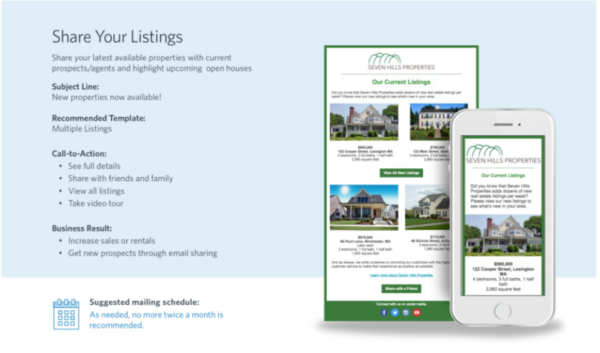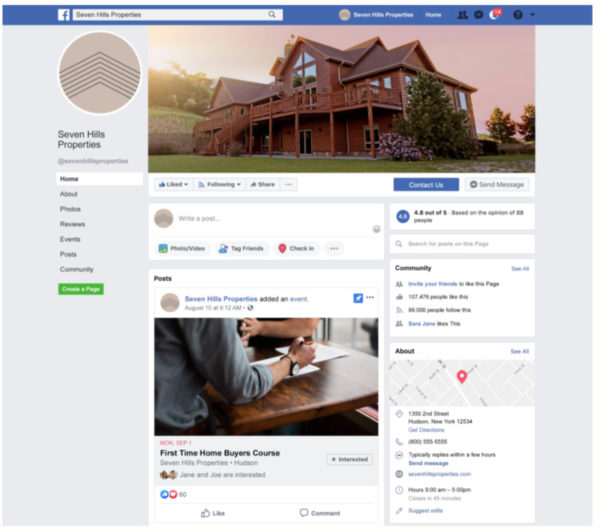
Marketing experts always tell you that you need to stand out from the crowd. That seems easier said than done, though, when you’re one of about two million real estate licensees in the United States.
But what if people could tell at a glance who you are as a real estate professional and what makes you unique? The secret is a standout brand identity and a strong real estate brand marketing strategy.
Here’s how branding strategies fit into your real estate marketing plan, and how having a consistent brand strengthens your professional image.
What is a brand?
Did you know more than 65% of Americans have felt an emotional connection with a brand? Or that consistent branding can boost your income by up to 23%? Having a unique brand is one of the best ways of connecting with your audiences, and it’s easy to integrate into your existing publicity.
But what is a brand, really? And how does it tie into your job as a real estate agent?
If someone asked you what brands you know, you might reply with the names of a few popular consumer product companies. Nabisco, maybe, or Pepsi.
What makes these companies come to mind so quickly? For most people, it’s about name recognition. You’ve heard of Nabisco and Pepsi and you know what they make. You can probably also picture their logos and even see their ads in your head.
That’s what a brand is. It’s a company identity that people recognize as familiar. Many marketing experts talk about it as a company’s personality — the traits and values that the business would have if it were a person. Think about the sophisticated and streamlined, creative nature of Apple or the gentle, family-focused sentimentality of Hallmark.
But you don’t have to be Apple or Pepsi to have a brand. You don’t even need to be a big company. All you need is a service to offer and a distinct way of doing business — and that’s true whether you work for a brokerage or as an independent agent.
The elements of real estate branding
Real estate marketing has two primary goals:
- To get the attention of people who want to buy or sell a home
- To establish your knowledge of real estate and your market
Branding helps you do both. By giving your professional identity an aesthetic and a voice, your brand sets you apart from the crowd.
Voice and values
You get to know and trust a person through what they say and how they say it. Someone comes across as more trustworthy when their values and personality are the same from one day to the next. The same thing is true for brands.
Think of Nike. Everything Nike says is direct and no-nonsense. Its motto is “Just do it.” Its brand personality exudes strength and discipline. When Nike talks about sports, people listen.
When your content is consistent, it helps people to trust what you have to say about real estate. Just ask yourself:
- What do you believe about the real estate business?
- How do you want your clients to feel about buying and selling a property?
- How do you want to come across as a professional or brokerage?
Everyone will answer these questions differently. You might aim for a brand that’s friendly and approachable, while someone else might prefer a more formal, professional voice. There’s no right or wrong answer as long as your voice, tone, and message stay consistent.
Color
Color improves brand recognition by up to 80%, and your choice of color has a major impact on how people perceive your brand. Think of the mellow forest green of Starbucks, for example, and how much your emotional experience with Starbucks changes when the brand switches to red for the holidays.
Choose one main color to match your real estate branding. You can use different shades of that color — a rich blue that fades into a lighter blue as part of your logo, for example. Two or more colors can work if they suit your aesthetic, but don’t branch out too far. Too many colors make your brand harder to recognize.
Not sure about your color choice? Show your ideas to colleagues and ask them for their instinctive reactions.
Logo and graphics
A strong brand is distinctive in its visuals. That means having the same style of graphics across all of your marketing materials, from your listing sheets and brochures to your email campaigns.

If you don’t already have a logo, now is the time to get one. You want it to convey the personality of your brand and what you do, without distracting from the main message that you’re trying to send. Remember to use your brand’s name, font, and color scheme, along with relevant, simple graphics.
You don’t need any graphic design experience to do this, and you don’t even have to hire an artist. With Constant Contact’s LogoMaker tool, it’s easy and fun for anyone to create a unique branded logo.
Branding in real estate marketing: How it fits together
To get the most out of your real estate brand marketing strategy, you need to integrate your branding consistently across every channel you use. Here are a few examples.
Branded emails
Email marketing is an important strategy for real estate professionals. It lets you keep in touch with people who are at all stages of buying and selling — just starting to think about it, actively shopping, recently closed on a new home, and so on.
With a consistent brand, you can send different messages to different customer groups and know that each one still reinforces your professional identity. Here are some tips to get you started with the design process:
- Use the same customized email template for every message, so readers always recognize your emails
- Keep the tone and voice consistent, with some variation depending on the topic and audience
- Include a standard header and footer (ex. your logo at the top and a link to your home page at the bottom)
Brands and social media
Branding helps to tie all of your social media messages back to your brand identity. That way, you can use the best practices of each individual platform — lots of images on Instagram, more in-depth articles on LinkedIn, and so on — and still have a consistent brand identity.
Your brand voice is especially important on social media, so keep it consistent. Use your logo as your profile image whenever possible and use similar “about” blurbs across platforms.
Offline branding
A strong brand unifies your online and offline marketing strategies. When you have a set brand color scheme, logo, and voice, your printed materials and digital marketing all clearly come from you. This unified image helps people to remember who you are and what you have to offer, and it instantly boosts your professionalism.
The takeaway
Now that you know how to build a consistent brand for all your offline and online marketing, and why that kind of consistency is important, you can start making decisions about that brand identity.
Start by taking a look at The Marketing Plan Guide, our guide to how to write a complete marketing plan for real estate professionals. Think about what you want your marketing messages to look like and let an idea take shape in your mind. Will it be a color scheme? A logo? It’s your brand identity — you’ll know when inspiration strikes.
Check that you’re not missing the Real State must-have documents by reviewing Businesses in a Box Real State Collection; the basic docs & more for real estate agents.
SOURCE: blogs.constantcontact.com

























